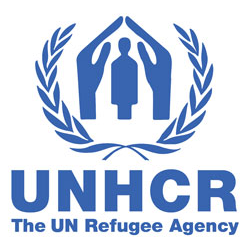Main Debates
- Is it sufficient that there is an absence of persecution or must there be access to genuine protection?
- Does the existence of an internal flight/relocation/protection alternative disqualify an individual for international protection?
- Is internal flight/relocation/protection alternative applicable only to cases of persecution at the hands of non-state actors?
Main Point
- Is an internal flight/relocation/protection alternative relevant to the case at hand?
- Drawing on human rights, is the proposed site of internal flight/relocation/protection reasonable?
Soft Law
- UNHCR, ‘Handbook on Procedures and Criteria for Determining Refugee Status under the 1951 Convention and the 1967 Protocol Relating to the Status of Refugees’, HCR/IP/4/Rev.1, 1979, para. 91.
- UNHCR, ‘Guidelines on International Protection: “Internal Flight or Relocation Alternative” within the Context of Art. 1A(2) of the 1951 Convention and/or 1967 Protocol relating to the Status of Refugees’, July 2003.
Cases
- New Zealand Refugee Appeal, No.76044 of 11 September 2008 (discussing the problems of subjectivity associated with the reasonableness approach).
- Secretary of State for the Home Department v. AH, [2007] UKHL 49, 14 November 2007 (House of Lords) (UK judicial decision ruling that the unduly harsh standard should not be equated with inhuman or degrading treatment or punishment, and that conditions must be compared against ’normal’ life standards within the country of origin).
- Secretary of State for the Home Department (Appellant) v. AH (Sudan), IG (Sudan) and NM (Sudan) (Respondents) and the Office of the United Nations High Commissioner for Refugees (Intervener). Case for the Intervener, 4 October 2007.
- Januzi v. Secretary of State for the Home Department, Hamid, Gaafar, and Mohammed v. Secretary of State for the Home Department, [2006] UKHL 5, 15 February 2006 (House of Lords). (UK judicial decision determining that it was unduly harsh to expect applicants from Darfur to relocate elsewhere in Sudan, but not unduly harsh for Kosovar Albanian to be relocated elsewhere in Kosovo).
- Duzdkiker v. Minister for Immigration and Multicultural Affairs, FAC 390 of 12 April 2000 (Australian Federal Court decision applying IPA test of real protection and reasonableness of relocation).
- New Zealand Refugee Appeal, No. 71684/99 of 29 October 1999 (decision of the Refugee Appeals Authority adopting the IPA principles of Michigan Guidelines).
- Thirunavukkarasu v Canada (Minister of Employment and Immigration) (1994) 1 FC 589 of 10 November 1993, (Federal Court of Canada, Court of Appeal). (The question is whether, given the persecution in the claimant's part of the country, it is objectively reasonable to expect him or her to seek safety in a different part of that country before seeking a haven in Canada or elsewhere).
- Sivaganthan Rasaratnam v. Minister of Employment and Immigration (Canada), F.C.J. No. 1256 of 1990 (Canadian Court of Appeal decision holding that IPA requires no possibility of persecution in area of potential relocation and that it is not unreasonable to seek refuge there).
Readings
Core
- J. Hathaway and M. Foster, 'The Law of Refugee Status', 2nd edn, (Cambridge: Cambridge University Press, 2014), pp. 332-342.
- University of Michigan, ‘The Michigan Guidelines on the Internal Protection Alternative’, Michigan Journal of International Law, vol. 21, Issue 1, April 1999.
Extended
- J. Hathaway and M. Foster, 'The Law of Refugee Status', 2nd edition, (Cambridge: Cambridge University Press, 2014), pp. 342-361.
- E. Ferris, ‘Internal Displacement and the Right to Seek Asylum’, Refugee Survey Quarterly, vol. 27, no. 3 (2008), pp. 83–92.
- J. Hathaway and M. Foster, ‘International Protection/Relocation/Flight Alter-native as an Aspect of Refugee Status Determination’, in E. Feller, V. Türk, and F. Nicholson (eds), Refugee Protection in International Law: UNHCR’s Global Consultations on International Protection (Cambridge: Cambridge University Press, 2003), pp. 357–417.
- N. Kelley, ‘Internal Flight/Relocation/Protection Alternative: Is It Reasonable?’, International Journal of Refugee Law, vol. 14, no. 1 (2002), pp. 4–44.
- H. Storey, ‘The Internal Flight Alternative Test: The Jurisprudence Re-examined’, International Journal of Refugee Law, vol. 10, no. 3 (1998), pp. 499–532.
- A. Zimmerman, C. Mahler, ‘Article 1A, Paragraph 2’, in A. Zimmerman (ed.), 'The 1951 Convention Relating to the Status of Refugees and Its 1967 Protocol: A Commentary', (Oxford: Oxford University Press, 2011), pp. 445–460.
- ‘The Michigan Guidelines’.
Editor’s Note
There is no requirement for an asylum-seeker to have sought protection elsewhere in his/her country before seeking asylum abroad. However, courts have held that there are at times options for internal relocation such that the fear of persecution cannot be said to be well-founded. In making such an assessment, consider the impossibility in many national contexts for people to move from one area to establish a life in another region without family or other ties, financial resources, or skills and analysis of internal protection alternatives does not end when there is an absence of persecution in a certain region, but must proceed to assess the realistic likelihood of access to protection.
See also Section VI.1.2 concerning the European practice concerning internal relocation alternatives.
 II.2.1.5 Internal Protection Alternative
II.2.1.5 Internal Protection Alternative
 UNHCR Documents
UNHCR Documents
 Cases
Cases




